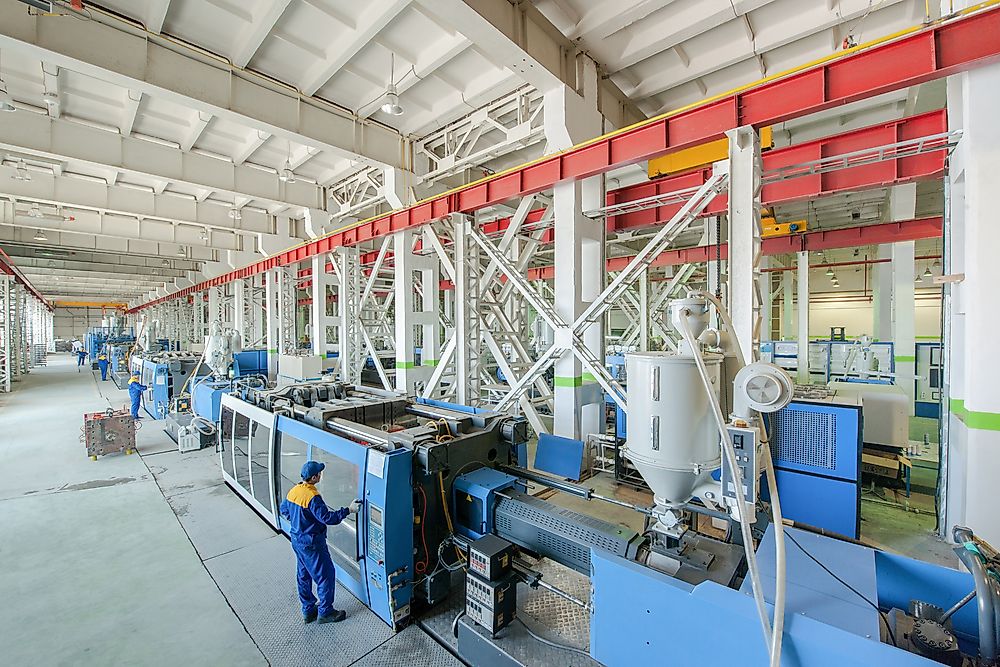How is Plastic Made?

The word plastic has a Greek origin meaning “capable of being molded or shaped.” Plastic is any material made from synthetic or semi-synthetic organic materials that can be molded into different shapes of solid matter. Plastics are composed of elements such as carbon, hydrogen, oxygen, nitrogen, chlorine, or sulphur. Each molecule of a piece of plastic consists of thousands of atoms bonded together which gives it a high molecular mass. Plastic is made from natural products such as crude oil, cellulose, natural gas, coal, and salt among others. Plastics are also called polymers.
Polymerization
Most plastics are made from oil, where heavy crude oil is separated into fractions. The fractions are then mixed with chemical compounds consisting of carbon and hydrogen which are called hydrocarbon chains. The hydrocarbon chains differ in molecular size and structure. Naphtha, one of the fractions, is vital for the production of plastic. The raw material molecules are then catalyzed to form monomers like ethene (C2H4), propene (C3H6), and butane (C4H8) among others. These monomers have double chemical bonds between carbon atoms which eventually undergo reactions to form chains called polymers. Raw materials such as xylenes and polystyrene are isolated and reacted to form monomers for the production of nylons and polyesters. For the distillation process to be successful, monomers must be pure. Polymerization has two mechanisms: addition reactions and condensation reactions.
Addition Reactions
Peroxide, a catalyst, is used to cause monomers to link next to each other in a series. The catalysts do not initiate the chemical reactions, but they do accelerate it. Polymerization reactions are used for polystyrene and polyvinyl chloride among other compounds. These reactions create no by-products, and they can be done in the gaseous phase spread in liquids.
Condensation Reactions
Condensation polymerization uses a catalyst that causes a monomer to react with the neighboring monomer which forms a dimer (two cells) and a byproduct. The dimers can also combine to form tetramers (four cells). This process goes on and on. The by-products are removed by the reaction to yield meaningful products that include water which is disposed of as well as other by-products that can be recycled and used in the same process. Recycling of the by-products at this stage is necessary to reduce their exposure to people and the environment as they contain harmful chemical compounds. The condensation reaction takes place in a mass of the molten polymer.
Final Products
Condensation polymerization yields nylons and polyesters. Different monomer combinations produce different plastics. A homopolymer (such as plastic milk jugs) is produced when all monomers are similar while a copolymer (such as washing detergent bottles) is produced when different monomers are used. Different monomers combined produce copolymers of variant properties depending on the product in mind. The manufacturer can make some plastics rigid or flexible, low temperature melting adhesives or high temperature resistant likes vehicle parts. The process makes plastics for a broad range of functions.
Plastics and Environment
The process of making plastics from crude oil is a relatively simple and cheap process which explains why among the by-products of oil, plastics are the cheapest. The use of plastics has been a major issue in many countries because of how long they take to decompose. When plastics are not properly disposed of they become a menace. Some countries have outlawed the production and use of plastics while others are in the process of doing the same.











